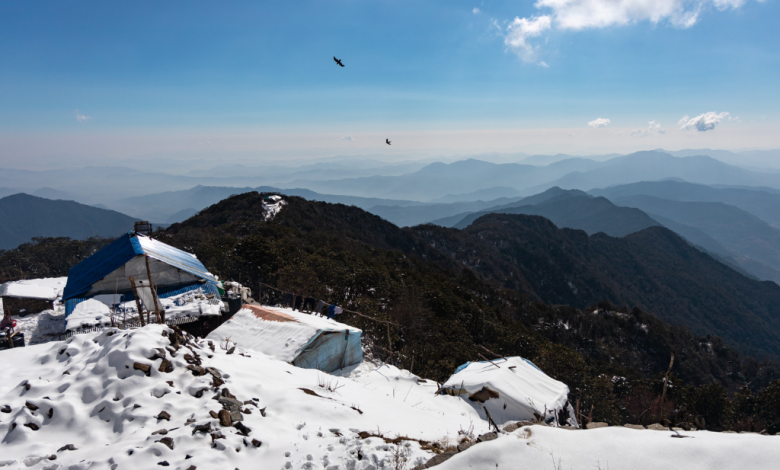Mardi Himal Trek: Journey to the Heart of the Himalayas
Mardi Himal Trek

Nepal, the land of the Himalayas, is a paradise for trekkers and adventure seekers. Every year, thousands of people from around the world come to Nepal to explore its breathtaking mountains and valleys. Among the many trekking routes in Nepal, the Mardi Himal Trek stands out as a hidden gem in the Annapurna region.
The Mardi Himal Trek takes you through beautiful forests, traditional villages, and stunning landscapes, offering an unforgettable experience for anyone who loves the outdoors. This trek is perfect for those who are looking for a less-crowded and off-the-beaten-path trekking experience.
In this article, we will take you on a journey to the heart of the Himalayas through the Mardi Himal Trek. We will cover everything you need to know about this trek, from the best time to go to what to expect on the trail.
Mardi Himal Trek: An Overview
The Mardi Himal Trek is a relatively new trekking route in Nepal that has gained popularity in recent years. This trek takes you to the base camp of Mardi Himal, a beautiful mountain located in the Annapurna region.
The Mardi Himal Trek offers an off-the-beaten-path experience, away from the crowds of other popular treks in the region. The trail takes you through dense forests, traditional villages, and stunning landscapes, offering breathtaking views of the Himalayas.
The trek is moderately challenging, and it’s suitable for anyone with a moderate level of fitness. The highest point on the trek is Mardi Himal Base Camp, which is located at an altitude of 4,500 meters.
Best Time to Go on the Mardi Himal Trek
The Mardi Himal Trek can be done all year round, but the best time to go depends on your preferences and priorities.
Spring (March-May) is considered the best season to trek in Nepal, including the Mardi Himal Trek. During this time, the weather is mild, and the skies are clear, offering excellent visibility of the mountains. The forests are in full bloom with rhododendrons, magnolias, and other wildflowers, making the trek even more beautiful.
Summer (June-August) is the monsoon season in Nepal, and the Mardi Himal Trek is not recommended during this time. The heavy rainfalls can cause landslides and make the trail slippery and dangerous.
Autumn (September-November) is another popular season for trekking in Nepal, including the Mardi Himal Trek. The weather is stable, and the skies are clear, offering unobstructed views of the Himalayas. The forests also change their color to yellow and orange during this time, making the trek even more picturesque.
Winter (December-February) is considered the offseason for trekking in Nepal, including the Mardi Himal Trek. The weather is cold, and the higher elevations may be covered in snow, making the trek more challenging. However, the clear skies and fewer crowds make it an excellent time for experienced trekkers who prefer solitude and peacefulness.
The best time to go on the Mardi Himal Trek is during the spring and autumn seasons. However, if you’re an experienced trekker and prefer fewer crowds and peacefulness, the winter season may be an excellent time for you. It’s important to note that weather conditions can vary, and it’s always a good idea to check the weather forecast before embarking on the trek.
How to Reach the Mardi Himal Trek Starting Point
The starting point of the Mardi Himal Trek is in Kande, which is located about an hour’s drive from Pokhara. Pokhara is a popular tourist destination in Nepal and can be reached by air or road.
If you’re flying to Nepal, you can take a domestic flight from Kathmandu to Pokhara. The flight takes around 30 minutes and offers stunning views of the Himalayas. Alternatively, you can take a bus from Kathmandu to Pokhara, which takes around 7-8 hours.
Once you reach Pokhara, you can hire a taxi or take a public bus to Kande, which is the starting point of the Mardi Himal Trek.
Mardi Himal Trek Itinerary
The Mardi Himal Trek itinerary can vary depending on your preferences and time constraints. However, the following is a typical itinerary for the Mardi Himal Trek:
- Day 1: Arrival in Kathmandu
- Day 2: Fly or drive to Pokhara (820m)
- Day 3: Drive to Kande (1,770m), trek to Deurali (2,100m)
- Day 4: Trek to Forest Camp (2,550m)
- Day 5: Trek to Low Camp (3,150m)
- Day 6: Trek to High Camp (3,700m)
- Day 7: Hike to Mardi Himal Base Camp (4,500m) and back to High Camp
- Day 8: Trek back to Forest Camp
- Day 9: Trek to Sidhing Village (1,700m)
- Day 10: Trek to Lumre and drive to Pokhara
- Day 11: Fly or drive back to Kathmandu
- Day 12: Departure from Kathmandu
What to Expect on the Mardi Himal Trek
The Mardi Himal Trek is a moderately challenging trek, and it’s suitable for anyone with a moderate level of fitness. The trail is well-marked, and you’ll be accompanied by an experienced guide throughout the trek.
The trail takes you through dense forests of oak, maple, and rhododendron, which are in full bloom during the spring season. You’ll also pass through traditional villages, where you can experience the local culture and lifestyle of the people in the region.
The trek offers stunning views of the Himalayas, including Mardi Himal, Annapurna South, and Machhapuchhre. The sunrise and sunset views from High Camp are particularly breathtaking and should not be missed.
Accommodation on the trek is in teahouses, which are basic but comfortable. The food is simple but delicious, with a variety of options available.
Also read:
Some Advantages of working with construction Companies
FAQs
Is it safe to trek in Nepal?
Yes, trekking in Nepal is generally safe. However, it’s essential to trek with an experienced guide and follow their advice regarding safety precautions.
Do I need a permit to trek in the Annapurna region?
Yes, you’ll need a trekking permit to trek in the Annapurna region. The permit can be obtained from the Nepal Tourism Board or your trekking agency.
What is the altitude sickness, and how can I prevent it?
Altitude sickness is a common problem among trekkers in Nepal. To prevent altitude sickness, it’s essential to acclimatize properly, stay hydrated, and ascend slowly. If you experience any symptoms of altitude sickness, such as headaches, nausea, or dizziness, it’s important to descend to a lower altitude immediately.
Conclusion
The Mardi Himal Trek is a hidden gem in the Annapurna region of Nepal, offering an unforgettable experience for anyone who loves the outdoors. The trek takes you through beautiful forests, traditional villages, and stunning landscapes, offering breathtaking views of the Himalayas.
If you’re looking for an off-the-beaten-path trekking experience in Nepal, the Mardi Himal Trek is the perfect choice. With its moderate level of difficulty and stunning scenery, this trek is suitable for anyone with a moderate level of fitness.
So, pack your bags and embark on a journey to the heart of the Himalayas with the Mardi Himal Trek.




